Are buyers in companies happy and fulfilled? Or, on the contrary, do they struggle to see their efforts recognized and valued properly? To look at these questions closely, Wavestone conducted an in-depth study with the aim of understanding the world of buyers. 363 buyers from across Europe (57%) and the rest of the world (with 14% in the US), mainly from large groups, provided answers to some thirty questions. Their answers paint a picture somewhat out of line with a “text-book” view of the purchasing function. While, overall, buyers get sufficient satisfaction from their work to match their expectations, as a function, purchasing lacks resources and tools; it therefore has considerable potential for development.
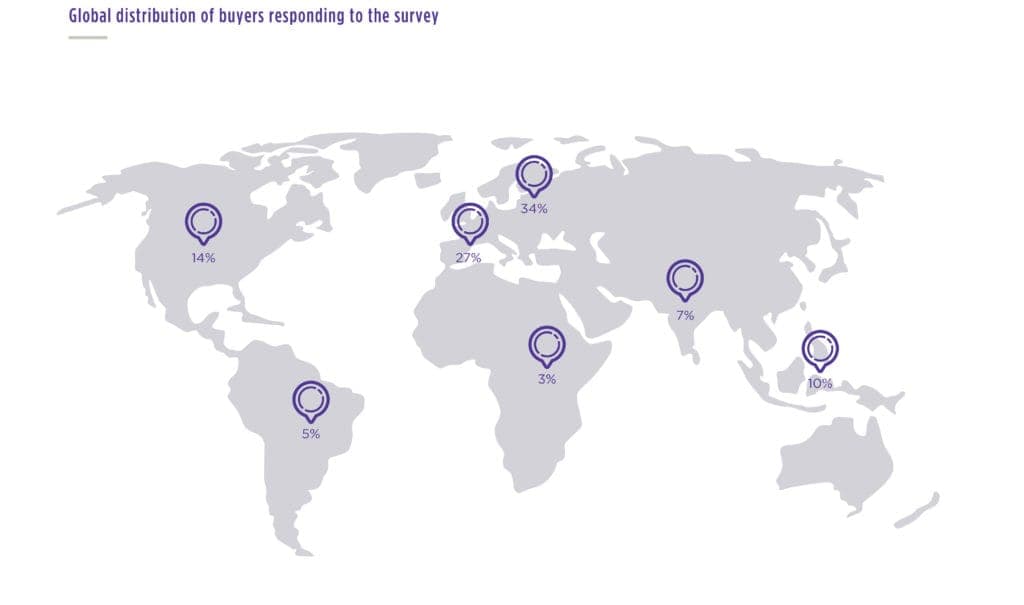
Overall, byers are fulfilled and proud of their discipline
The first encouraging finding is that overall, 3/4 of respondents feel comfortable in their skins as buyers.
In fact, for more than half the respondents, the first thing they say when describing their work is that it’s “something I’m proud of.” Some of them even characterize their role as being “fun”! Having said that, a significant proportion of them cite the stressful nature of the activity as the main thread in their daily working lives.
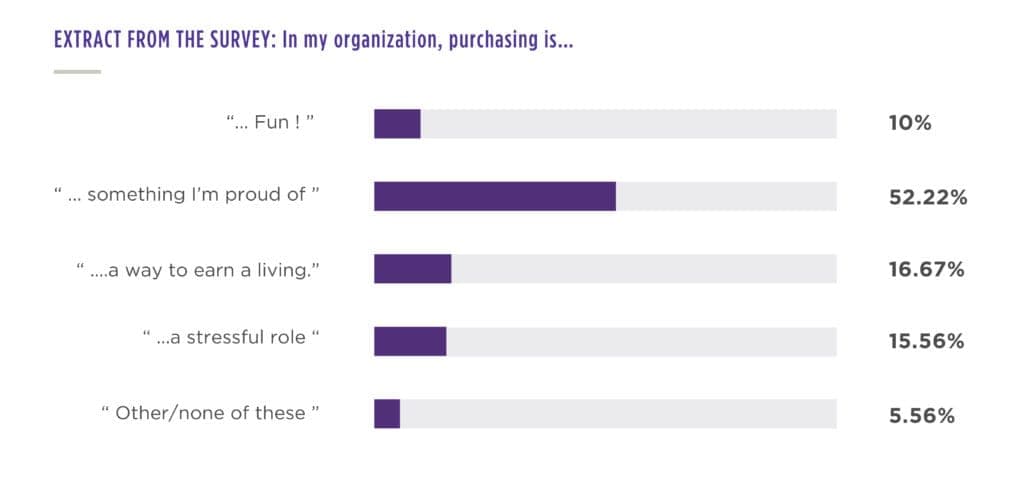
Varied and rew arding work activity
Almost all the respondents who reported being fulfilled by their work consider themselves involved in a wide range of activities. Other key factors are clear objectives, and frequent opportunities to meet their suppliers.
Overall, there is a balance in the various activities they carry out as buyers, given that reporting, sourcing, negotiation, administration, and contract management all represent broadly equivalent workloads. Another point of satisfaction is that 2/3 of respondents consider that their job allows them a good work-life balance. In addition, buyers report that they are satisfied with the way they interact with suppliers. In fact, over 70% say that their company’s management allows them the opportunity to meet suppliers sufficiently often. However, it is interesting to note that, for half of them, the buyer-supplier relationship does not allow buyers to tap the potential for innovation that could exist in relation to suppliers.
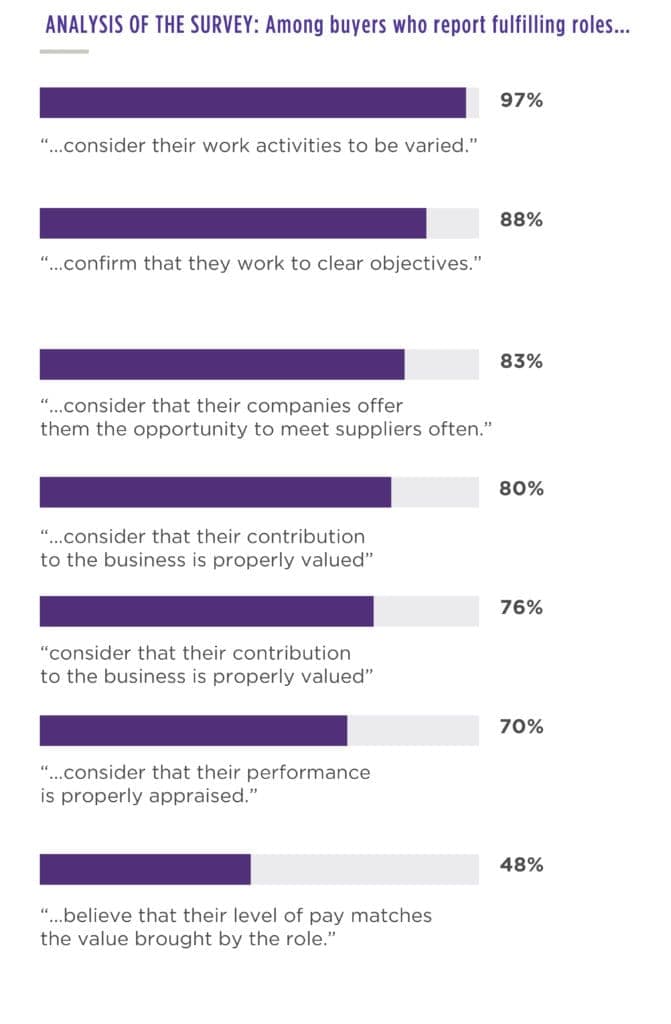
Byers feel their efforts are recognized…
Over 69% of respondents believe that their contribution to the company is properly valued. Also, less than 2% of them feel that there is a major discrepancy between the work they do and their employer’s view of it.
In addition, buyers believe that purchasing, as a function, is either well viewed (56%) or very well viewed (12%) in the eyes of other employees.
… even if they struggle to be seen as real partners
Paradoxically, only 1/3 of buyers think they are regarded as genuine “partners” in their businesses. Nearly half of them report that their peers perceive their role as involving only the essential aspects of the purchasing function: reducing costs and administration. Therefore, it’s probably not surprising that almost half of the buyers interviewed do not perceive the purchasing function as a springboard for a career in their business.
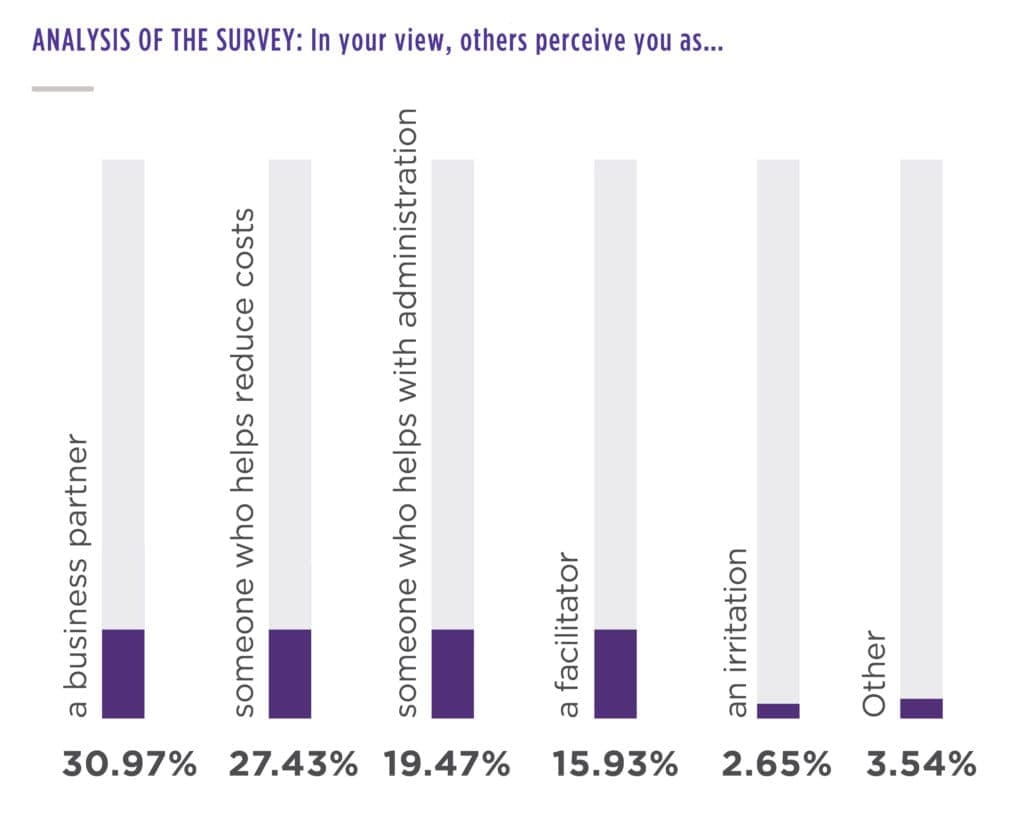
Byers offer up a mixed assessment of their working conditions
Almost 80% of respondents believe that their objectives are fairly well defined, and 3/5 are relatively satisfied with their performance appraisal process.
However, 40% consider the qualitative side of their performance evaluation to be lacking or not well designed.
Despite all this, there continues to be a mismatch between perceptions of added value and compensation; only 40% of respondents think their salaries are “fair”, half believe they are “not really” paid fairly, and the rest are decidedly unsatisfied.
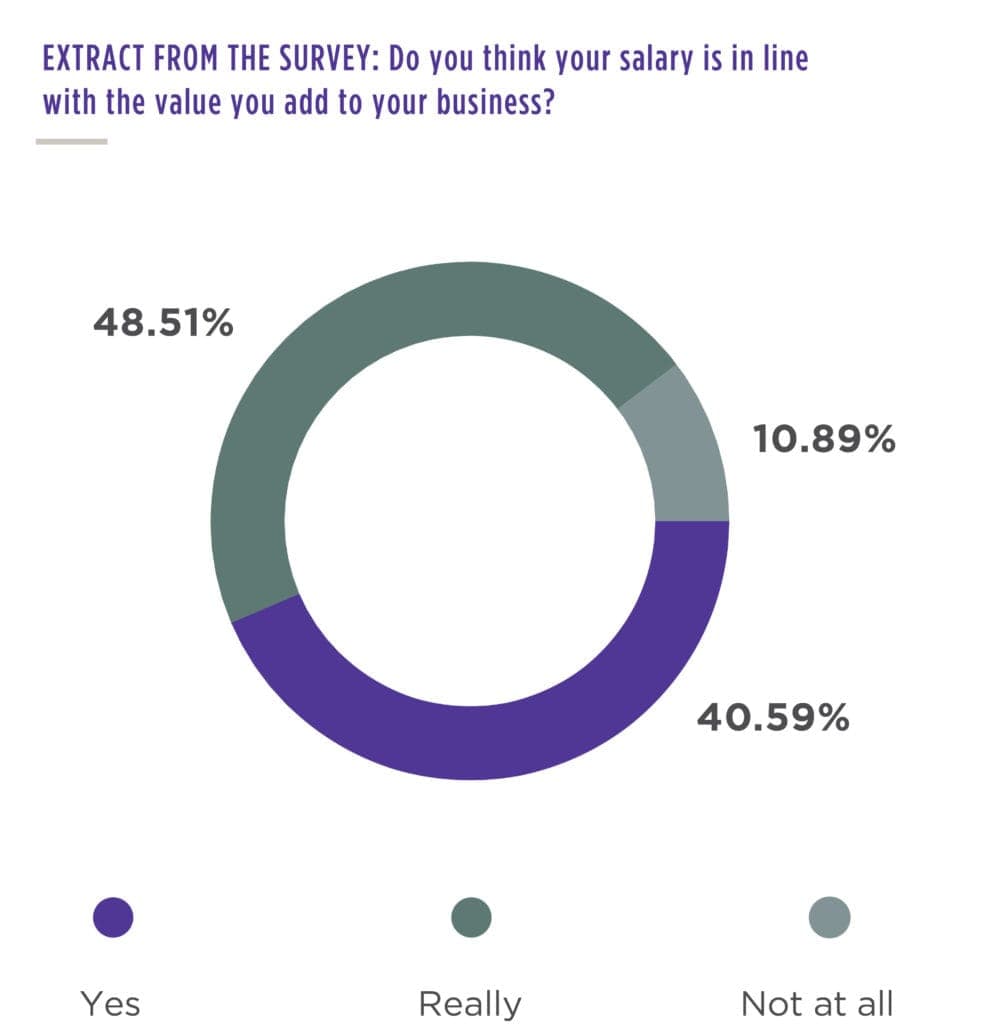
Work remains to be done to professionalize the purshasing function
Training and tools appear as two of the major threads in improving the work and performance of buyers. More than half of the buyers are not satisfied with the number of training opportunities offered by their employers. Besides the amount, the relevance of programs is also lacking. As a result, 45% of respondents indicate that their development programs are not aligned with their needs as a buyer. Finally, the survey revealed a real lag in the rate that the function is developing, when considering the tools on the market that are available to buyers. While 43% consider that the tools they use do not match their needs, more than 55% report that they cannot be used to produce accurate and reliable analysis.
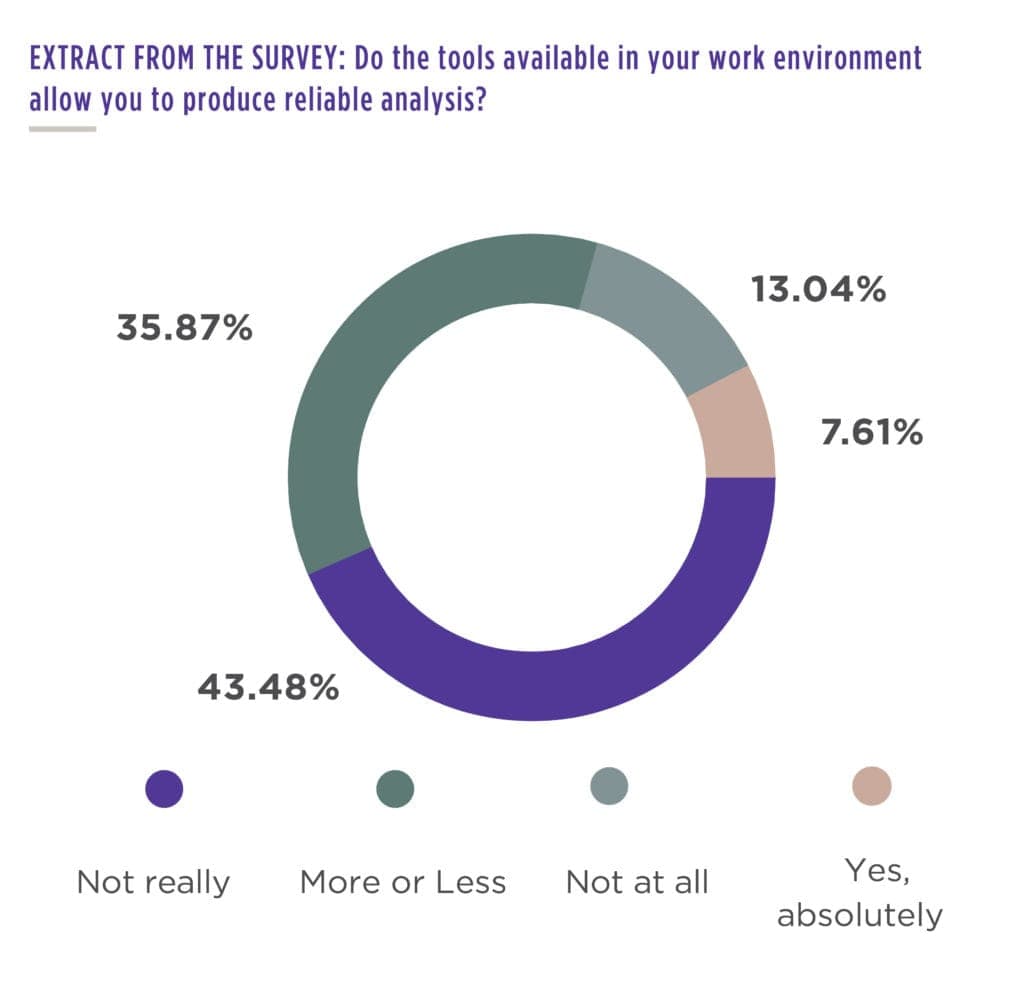
In conclusion, it appears that buyers adjust to the environment and achieve fulfillment in purchasing, even if the function itself is not fully mature. The function’s position in the business, its non-executive status, and the lack of resources mean that persuasion and effort are still required on the part of buyers to broaden the scope of their involvement. From our perspective, we firmly believe that new expectations in terms of harnessing innovation, more responsible approaches to purchasing, and more proactive risk management will, over time, result in far-reaching changes to the role of buyer. So, watch out, as the “fun” is taken to new levels of professionalization!


